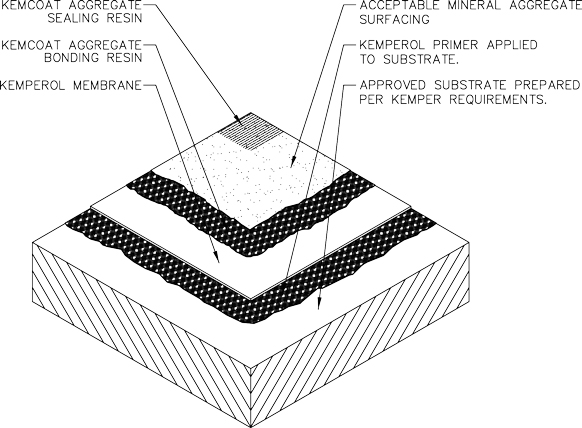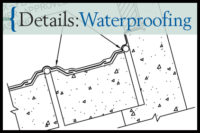
The waterproofing of balconies is an important component in high-rise structures. Although these exterior components rarely have living space under them, waterproofing is still required to protect the structure from deterioration by the elements. These overhangs are subjected to continual moisture and precipitation as well as wind, particularly in high-wind regions. Deterioration of the balcony’s structural components - steel and concrete - is expensive to remedy and the proper waterproofing protection could add valuable service life to these components.
The application of the waterproofing material is consistent with standard waterproofing methodology. The waterproofing barrier shall be applied directly the substrate and should be fully adhered.
The type of surfacing can be chosen based aesthetics or use. Surfaces can be provided to accommodate foot traffic in livable spaces or pavers or garden assemblies.
The detail provided illustrates application of mineral surface over the waterproofing application to accommodate foot traffic.

Balcony
waterproofing with surfacing assembly detail courtesy of Kemper System.
- Waterproofing membrane
- Primer
- Bonding resin
- Mineral aggregate surfacing
- Sealing resin
- Apply the proper primer to the substrate in a full and even application in accordance with the manufacturer’s requirements.
- Apply waterproofing membrane in accordance with the manufacturer’s requirements.
- Apply the bonding resin over the completed membrane surface. The resin shall be applied in a full and even application in accordance with the manufacturer’s requirements.
- Prior to full cure of the bonding resin broadcast the approved aggregate surfacing over the entire area. Make certain that there is even coverage throughout the area.
- Apply the manufacturer-approved sealing resin over the completed aggregate surface.
- Application must be in compliance with the manufacturer's requirements and completed at approved ambient temperatures.

